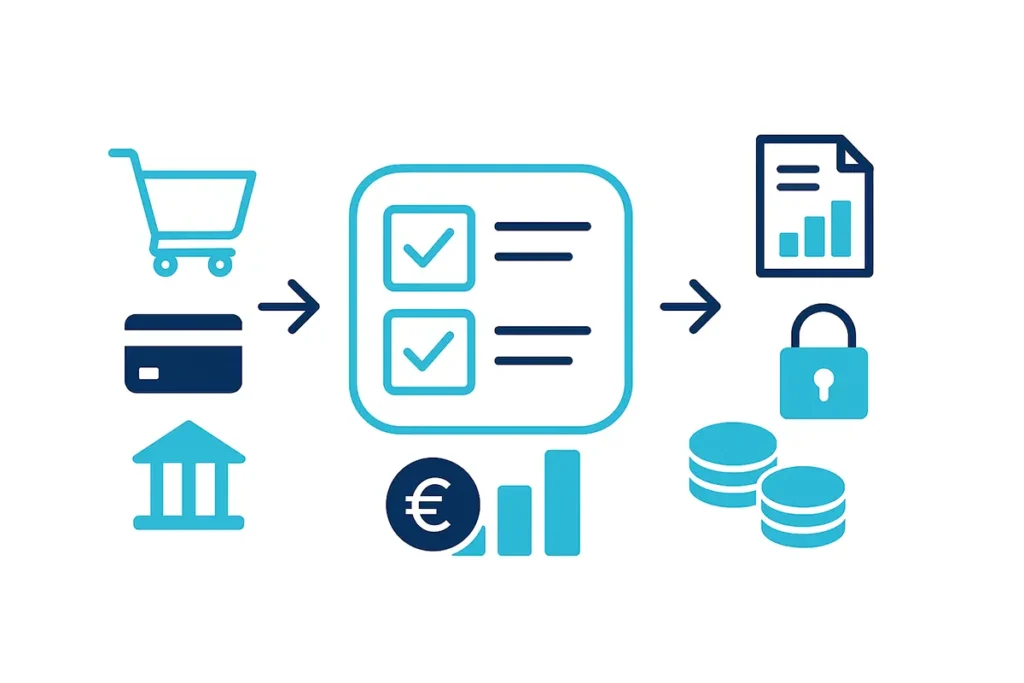Die Vorteile von Payment Clearing mit nexnet

Zentralisierte Zahlungsabwicklung
Vereinfachen Sie Ihre Zahlungsprozesse, indem Sie alle Transaktionen zentral über nexnet abwickeln und behalten Sie den Überblick.
Automatisierte Verrechnung
Reduzieren Sie manuelle Eingriffe durch automatisierte Abgleich- und Verrechnungsprozesse, sparen Sie Zeit und minimieren Sie Fehler.
Transparente Berichterstattung
Erhalten Sie detaillierte Reports über Ihre Zahlungsströme, um jederzeit die volle Kontrolle über Ihre Finanzen zu behalten.
So funktioniert Payment Clearing mit nexnet
Transaktionen erfassen und prüfen
Erfassen Sie alle Zahlungsdaten zentral und prüfen Sie diese auf Richtigkeit. So vermeiden Sie Fehler und sichern die Qualität.
Zahlungen verifizieren und validieren
Automatische Validierung und Prüfung der Zahlungen auf Vollständigkeit und Richtigkeit, um eine reibungslose Verarbeitung zu gewährleisten.
Sichere und zuverlässige Auszahlungen
Die verarbeiteten Beträge werden sicher und zuverlässig an die entsprechenden Empfänger ausgezahlt – schnell und problemlos.
Häufig gestellte Fragen zu Payment Clearing
Hier finden Sie Antworten auf die wichtigsten Fragen rund um Payment Clearing und seine Vorteile für Ihr Unternehmen.
Was ist Payment Clearing?
Wie funktioniert Payment Clearing?
Für wen ist Payment Clearing geeignet?
Unsere Payment-Clearing-Lösung richtet sich an Start-ups, den Mittelstand und große Konzerne, die ihre Zahlungsprozesse optimieren und automatisieren möchten.
Welche Vorteile bietet Payment Clearing?
nexnet bietet Ihnen mehr Transparenz, geringere Kosten, automatisierte Buchungen und ein optimiertes Währungsmanagement – alles aus einer Hand.
Wie sicher ist Payment Clearing?
Die Sicherheit Ihrer Daten hat für nexnet höchste Priorität. Wir arbeiten mit modernen Sicherheitsstandards, verschlüsselten Prozessen und Schutzmechanismen gegen Betrug.
Wie verbessert Payment Clearing die Effizienz?
Belegbare Erfolge, nachweislich performant
Belegbare Erfolge, nachweislich performant
Buchen Sie Ihre Beratung

Farid
Jetzt unverbindlich beraten lassen und Potenziale entdecken!
Sicherheit und Qualität, auf die Sie vertrauen können




















